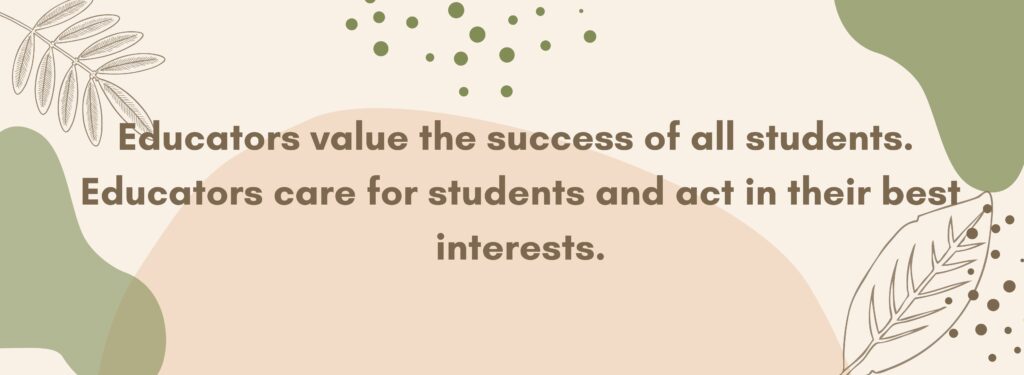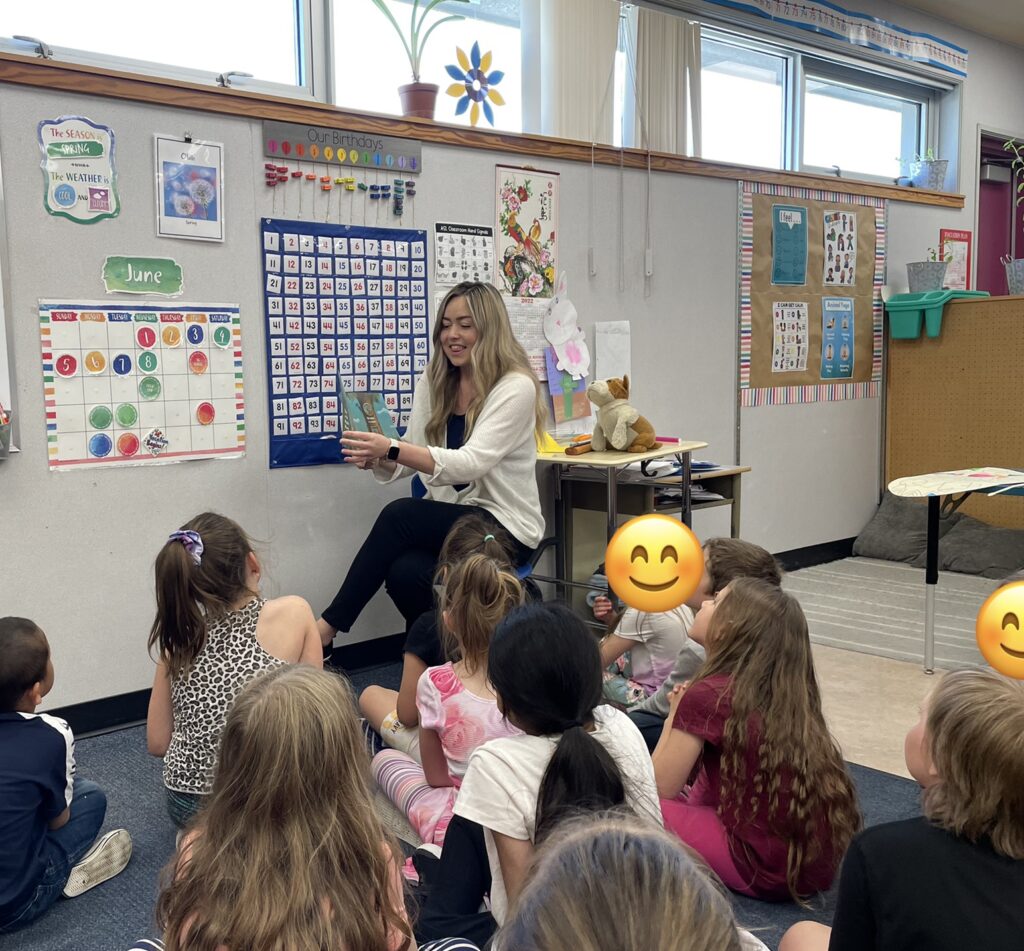
Valuing the Success of all Students
Standard 1 includes educators valuing the success for all students, caring and acting in their best interest. After gaining more experience in classrooms through my observational and teaching practicums, I have gained a deeper understanding of what Standard 1 means to me.
- Maintaining a high level of professional commitment for all students social and emotional well-being.
- Providing an inclusive environment where all students feel safe and cared for, with a foundation rooted in kindness and respect.
- Champion for all students success, starting with their strengths to their stretches and meeting the students where they are.
- Actively advocating for the students to ensure they receive the support that is in their best interest.
Universal Design of Learning and Differentiated Instruction
Throughout my practicum experiences, I have learned that caring for students and acting in their best interest includes Universal Design of Learning (UDL) and differentiated instruction (DI). The ideas that I have learned about and adopted into my own teaching practice were developed by Canadian educational researcher Jennifer Katz (2012) of UBC. These ideas are committed to making the curriculum accessible to all. The following eight points are important aspects when creating a classroom environment that is accessible for all and acts in the students best interest:
- Classroom climate follows from practices that value students diversity and inclusiveness.
- Interactions among students and between students and the teacher are built on communication that can be understood by all.
- Physical environment and products are available to all and safe for all.
- Instructional standards hold high expectations for all and provide a high level of support for all.
- Instructional methods are varied and ensure accessibility for all.
- Information resources and technology are engaging and flexible so they can be understood by all.
- Feedback is provided regularly.
- Assessment of student progress is frequent and adjusted so all can show what they know.
Hutchinson, N. L., & Specht, J. A. (2020). Inclusion of Learners with Exceptionalities in Canadian Schools Sixth Edition. North York, Ontario: Pearson Canada Inc. pg. 230
Student-Centered Classrooms
Reflecting on my learning journey in the UNBC B.Ed program, Standard 1 resonates with the student-centered teaching practice. The student-centered classroom involves; recognizing and accommodating different learning modalities, listening to and respecting each learner’s point of view, and encouraging and facilitating learners’ shared decision-making. In the student- centered classroom, the learner requires individualization, interaction, and integration. Providing individualization, or differentiation of instruction, ensures that learners are empowered to create their own activities and select their own authentic materials. Learners interact through collaborative, authentic, and engaging action-oriented tasks. During the learning process, learners integrate what they have learned with prior learning and construct new meaning (Moffett & Wagner, 1992).
Moffett, J., & Wagner, B. J. (1992). Student-centered language arts, K-12. Portsmouth, NH: Boynton/Cook Publishers Heinemann.
https://lincs.ed.gov/sites/default/files/6%20_TEAL_Student-Centered.pdf
Upon reflecting what Standard 1 means to me, it reminds me of what Rita Pierson shared about educators advocating for every child. Her powerful words resonated with me and reminded me of the importance of creating a connection where every student can feel seen, heard, and safe to be supported in their learning journey. I would like to share the quote that resonated with me in connection with what Standard 1 means to me, enjoy!
“Every child deserves a champion, an adult who will never give up on them, who understands the power of connection and insists that they become the best they can possibly be.”
Rita pierson

